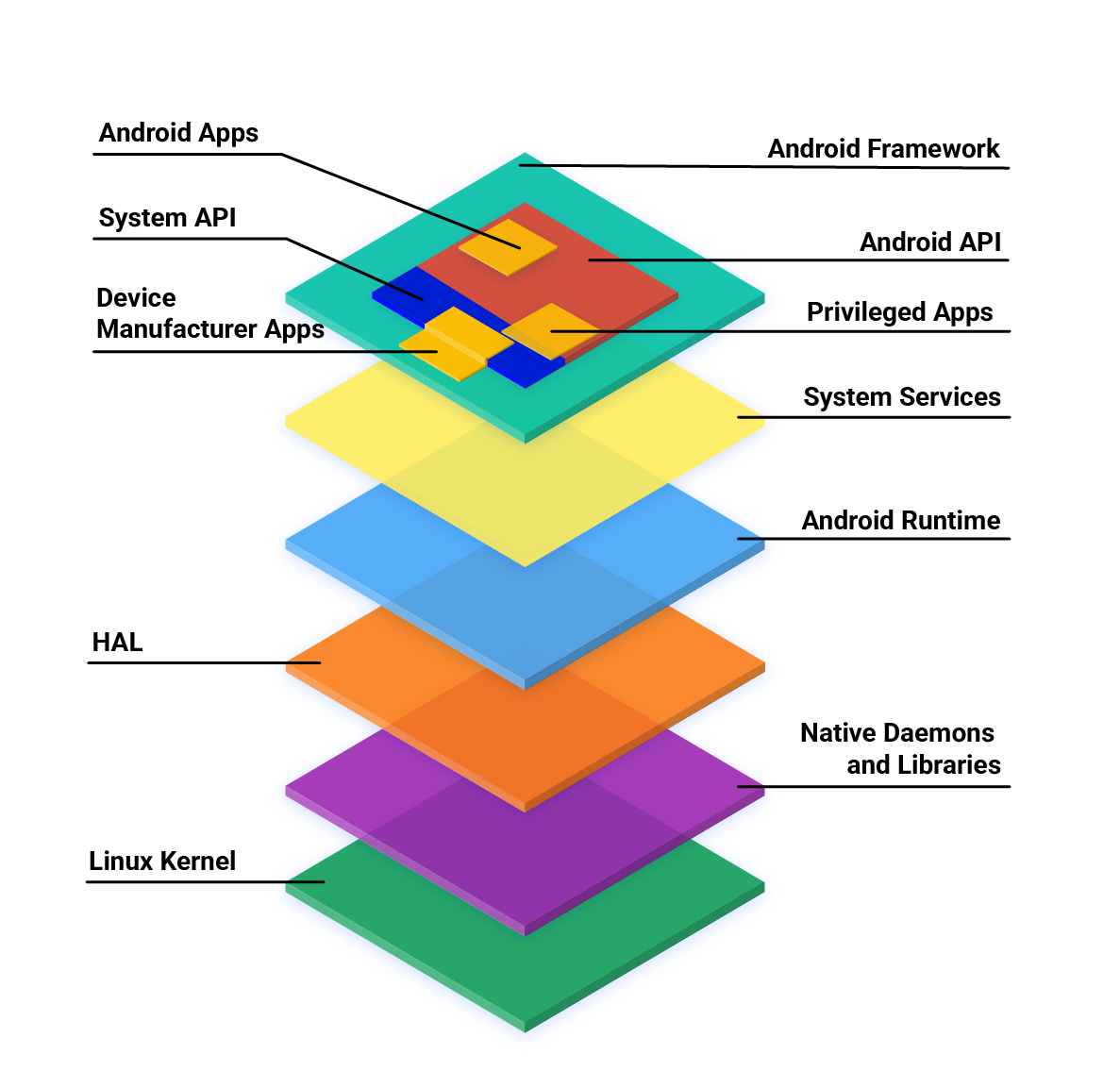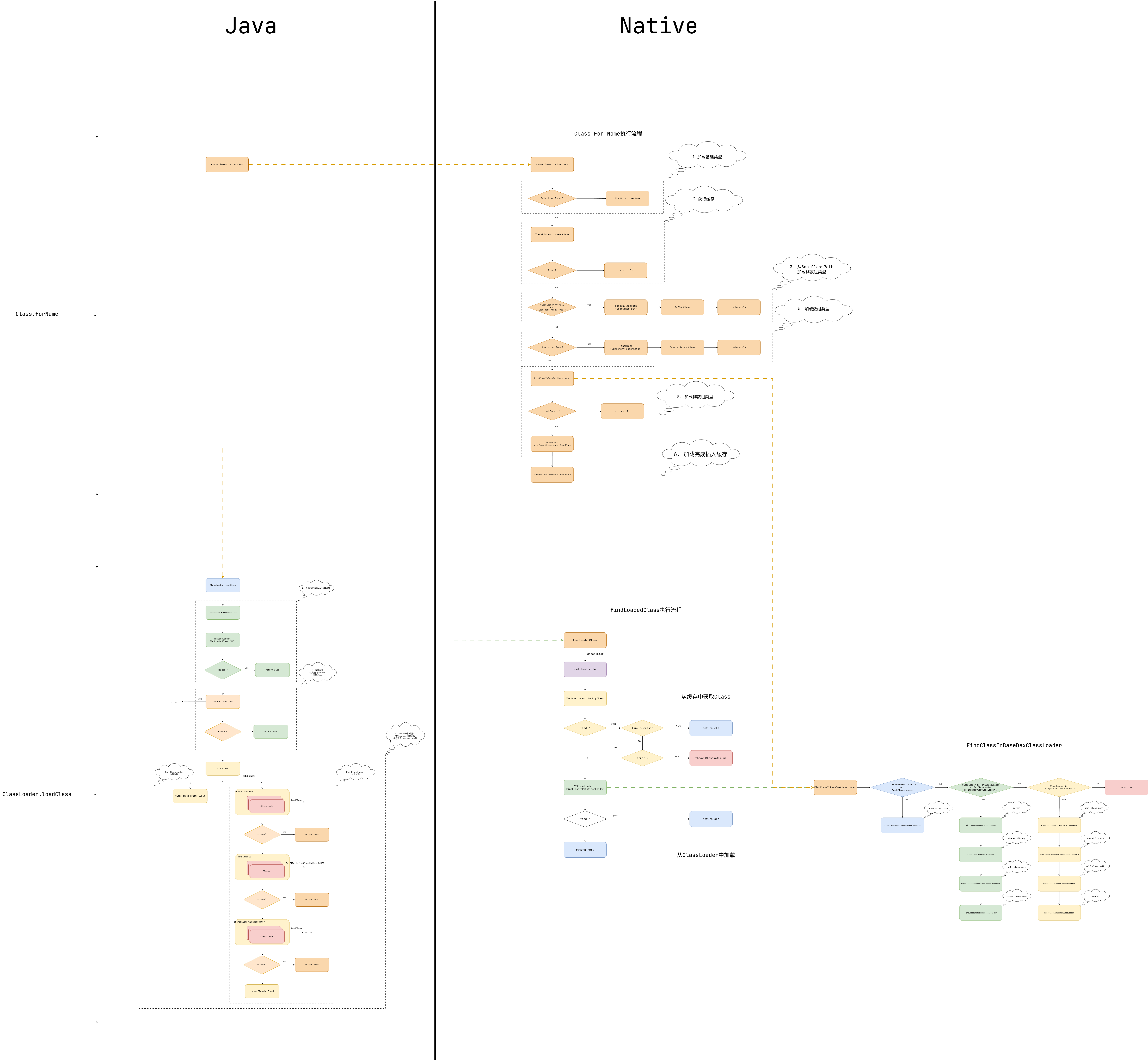AOSP阅读环境配置
硬件环境 DIY主机
CPU:AMD R9 7950X
内存:光威 6400Hz 32G(16G * 2)
主板:GIGABYTE 冰雕小板
硬盘:ZhiTai TiPlus 7100 Gen4 2TB
软件配置 系统:Ubuntu 24.04
源代码安装 具体流程可分为
1.repo工具下载
2.源代码下载
略
安装流程可参考
清华镜像源帮助问题
工程基础配置
注意这里不是说repo工具需要做一些配置。
而是说需要使用repo做一些工程上的配置。
1.repo start branchName –all
将所有工程开启新分支(方便后续拉取多分支)
2.配置脚本
可将常用的脚本书写复用
如下是笔者封装的lunch脚本。(用于source aosp脚本)
1 2 3 source build/envsetup.sh # 自定义output路径,防止在不同分支check的时候输出相互覆盖。打包异常。 export OUT_DIR=out/$(repo branch | grep "\*" | awk -F ' ' '{print $2}') && lunch aosp_redfin-userdebug
3.zshrc配置
aosp soong build system配置,用于方便调试。
1 2 3 4 5 # aosp soong # 生成compile_commands.json # ref https://android.googlesource.com/platform/build/soong/+show/master/docs/compdb.md export SOONG_GEN_COMPDB=1 export SOONG_GEN_COMPDB_DEBUG=1
源码阅读环境配置
现在是2025/1/12日
AOSP的源代码主要是C++/Java, 目前没找到特别满意的能同时阅读 C++ & Java的工具。所以C++ Java环境目前是单独配置的。
其中Java使用的是ASfp, C++使用的VsCode + Clangd + LLDB
java环境 1.Asfp配置
安装过程略。
具体可见Andriod Developer官网
简单介绍下Asfp.(Android Studio for Platform)其实就是Android Studio. (只有Linux可以安装)
差别就是这个Android Studio兼容了soong构建系统,可以用于直接阅读 aosp source code
ASfp其实就比普通Android Studio多了一个tab.
图一 Asfp tab
使用方式就简单说下可以通过图一的 Asfp new Project开启一个弹窗,填写部分信息等待Sync完成就好了~
a. 输入aosp路径
图二Asfp WorkSpace设置
b.填写lunch target,阅读源码的路径(一般都是frameworks/base, 按需填写)
图三 Asfp 打开模块配置
2.配置asfp json文件(如果你跟我一样自定义了OUT_DIR或者其他路径)
图四 config.json配置
到这就基本上配置好了~
native环境 0.安装vscode
1.插件安装
CodeLLDB
Clangd
2.配置Clangd
配置如下XXX.code-workspace文件
1 2 3 4 5 6 7 8 9 10 11 12 13 14 15 16 17 18 19 20 21 22 23 24 25 26 27 28 29 30 31 32 33 34 35 36 37 38 39 40 41 42 43 44 45 46 47 48 49 50 51 52 53 54 55 56 57 58 59 60 61 62 63 64 65 { "folders" : [ { "name" : "android13-r78" , "path" : "/Users/rose/aosp/source/" } ] , "settings" : { "editor.formatOnPaste" : true , "editor.formatOnType" : true , "C_Cpp.errorSquiggles" : "Disabled" , "C_Cpp.intelliSenseEngineFallback" : "Disabled" , "C_Cpp.intelliSenseEngine" : "Disabled" , "clangd.path" : "/Users/rose/aosp/source/prebuilts/clang/host/linux-x86/clang-r450784d/bin/clangd" , "clangd.arguments" : [ "--compile-commands-dir=/Users/rose/aosp/source/out/android13-r78/soong/development/ide/compdb/" , "--log=verbose" , "--pretty" , "--all-scopes-completion" , "--completion-style=bundled" , "--cross-file-rename" , "--header-insertion=iwyu" , "--header-insertion-decorators" , "--background-index" , "--clang-tidy" , "--clang-tidy-checks=cppcoreguidelines-*,performance-*,bugprone-*,portability-*,modernize-*,google-*" , "-j=32" , "--pch-storage=disk" , "--function-arg-placeholders=false" ] , "lldb.displayFormat" : "auto" , "lldb.showDisassembly" : "auto" , "lldb.dereferencePointers" : true , "lldb.consoleMode" : "commands" , } , "launch" : { "configurations" : [ ] } }
3.配置LLDB
在aosp root路径下下配置lldb init file
1 2 3 4 # 排除SIGSTOP,SIGSEGV断点 process handle SIGSTOP -n true -p true -s false process handle SIGSEGV -n true -p true -s false
具体调试流程不做详细介绍,具体可见Andriod Developer 官网
Art 调试环境
art中的很多代码是做了优化的,这会导致。我们断点无法对应上。
需要做如下修改以防止代码优化。
art/build/Android.bp
1 2 3 4 5 6 7 8 9 10 11 12 13 14 15 16 17 18 19 20 21 22 23 24 25 26 27 28 29 30 31 32 33 34 35 36 37 38 39 40 41 42 43 44 45 46 47 48 49 50 51 52 53 54 55 56 57 58 59 60 61 62 63 64 65 66 67 68 69 70 art_module_art_global_defaults { // Additional flags are computed by art.go name: "art_defaults", // ...... cflags: [ // Base set of cflags used by all things ART. "-fno-rtti", "-ggdb3", "-Wall", "-Werror", "-Wextra", "-Wstrict-aliasing", "-fstrict-aliasing", "-Wunreachable-code", "-Wredundant-decls", "-Wshadow", "-Wunused", "-fvisibility=protected", "-O0", // 启用基础优化以减少栈使用 "-fno-inline", // 可选:禁用函数内联 "-fno-inline-functions-called-once", // 进一步禁用内联 "-fno-optimize-sibling-calls", // 进一步禁用内联 "-Wno-error=frame-larger-than", // 堆栈大小超出不报错 "-Wno-frame-larger-than", // 关闭堆栈大小检查 "-fno-omit-frame-pointer", // 保留栈针 "-g3", // 生成调试信息 // Warn about thread safety violations with clang. "-Wthread-safety", // TODO(b/144045034): turn on -Wthread-safety-negative //"-Wthread-safety-negative", // Warn if switch fallthroughs aren't annotated. "-Wimplicit-fallthrough", // Enable float equality warnings. "-Wfloat-equal", // Enable warning of converting ints to void*. "-Wint-to-void-pointer-cast", // Enable warning of wrong unused annotations. "-Wused-but-marked-unused", // Enable warning for deprecated language features. "-Wdeprecated", // Enable warning for unreachable break & return. "-Wunreachable-code-break", "-Wunreachable-code-return", // Disable warning for use of offsetof on non-standard layout type. // We use it to implement OFFSETOF_MEMBER - see macros.h. "-Wno-invalid-offsetof", // Enable inconsistent-missing-override warning. This warning is disabled by default in // Android. "-Winconsistent-missing-override", // Enable thread annotations for std::mutex, etc. "-D_LIBCPP_ENABLE_THREAD_SAFETY_ANNOTATIONS", ], // ...... }
art/runtime/Android.bp
1 2 3 4 5 6 7 8 9 10 11 12 13 14 // Properties common to `libart` and `libart-broken`. art_cc_defaults { name: "libart_common_defaults", // .... target: { android: { lto: { thin: false, }, }, }, // ..... }
在配置修改完成以后需要编译一个apex,然后安装。
具体流程可参考 (如果想集成到系统镜像中,也可以参考,但是安装起来需要刷机,挺麻烦的)
art/build/README.md
1 2 3 4 5 6 7 8 9 10 # 编译apex(测试版将pkg 替换为 com.android.art.debug) banchan com.android.art <arch> export SOONG_ALLOW_MISSING_DEPENDENCIES=true # 编译 m apps_only dist # 安装 & 重启 adb install out/dist/com.android.art.apex adb reboot
其他 repo技巧
repo其实本质上就是通过manifest组织多个git repository, 通过统一对仓库执行git指令实现管理
1.repo forall
repo forall是一个非常有用的指令他可以实现特别多想法。
1 2 3 4 5 6 7 8 9 # 清除untrack commit(清除以前记得做check, 不可回滚!!!) repo forall -c "git clean -dfn" # stash所有变更 repo forall -c "git stash push -m XXX" # 查看所有project路径 repo forall -c "pwd"
2.repo init
init不仅仅能用于初始化下载源码,还能用于切换分支。
假如有一个场景:我现在下载了android13的源码,如果我想且回去。就可以使用如下指令实现
1 2 3 4 5 6 7 8 9 10 11 12 # 下载android13源码 repo init -u https://XXX -b android-13.0.0_r78 # 下载 repo sync # 切换分支 repo init -b android-11.0.0_r48 # checkout到制定的指定的分支 # 这里-l是指 `不使用network,本地同步修改工作区` repo sync -l
3.repo checkout
用于将所有的project切换到特定分支
等价于repo forall -c "git checkout XXX"
总结 1.主要针对于Java & C++源码阅读环境 & 调试环境进行了配置。
2.其中Java可以使用Asfp进行源码查阅以及调试
Asfp其实也可以阅读C++代码,只是阅读体验不佳。
代码中会有很多报错。语法提示,代码跳转都存在一些问题。
不过好在Java源码阅读、debug特别给力。(很吃性能,内存20G以下电脑就别尝试了,32G勉强能用)
3.C++需要使用Vscode + LLDB + Clangd
LLDB用于调试,Clangd用于解析源码查阅,阅读体验不逊于Clion, 而且不吃性能
缺点很多,主要是配置比较繁琐,不过反过来看定制性很强~










